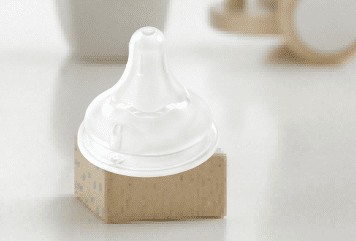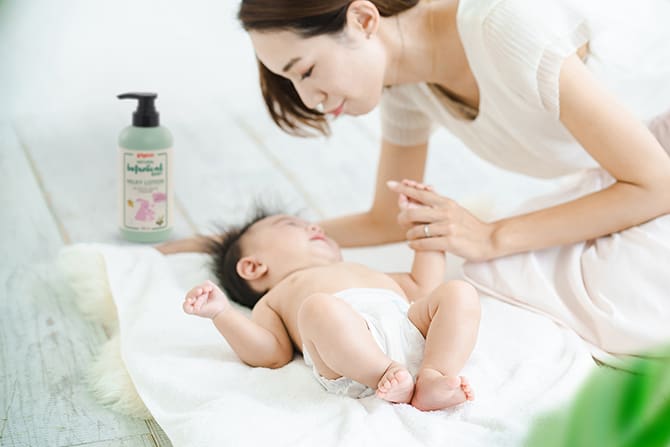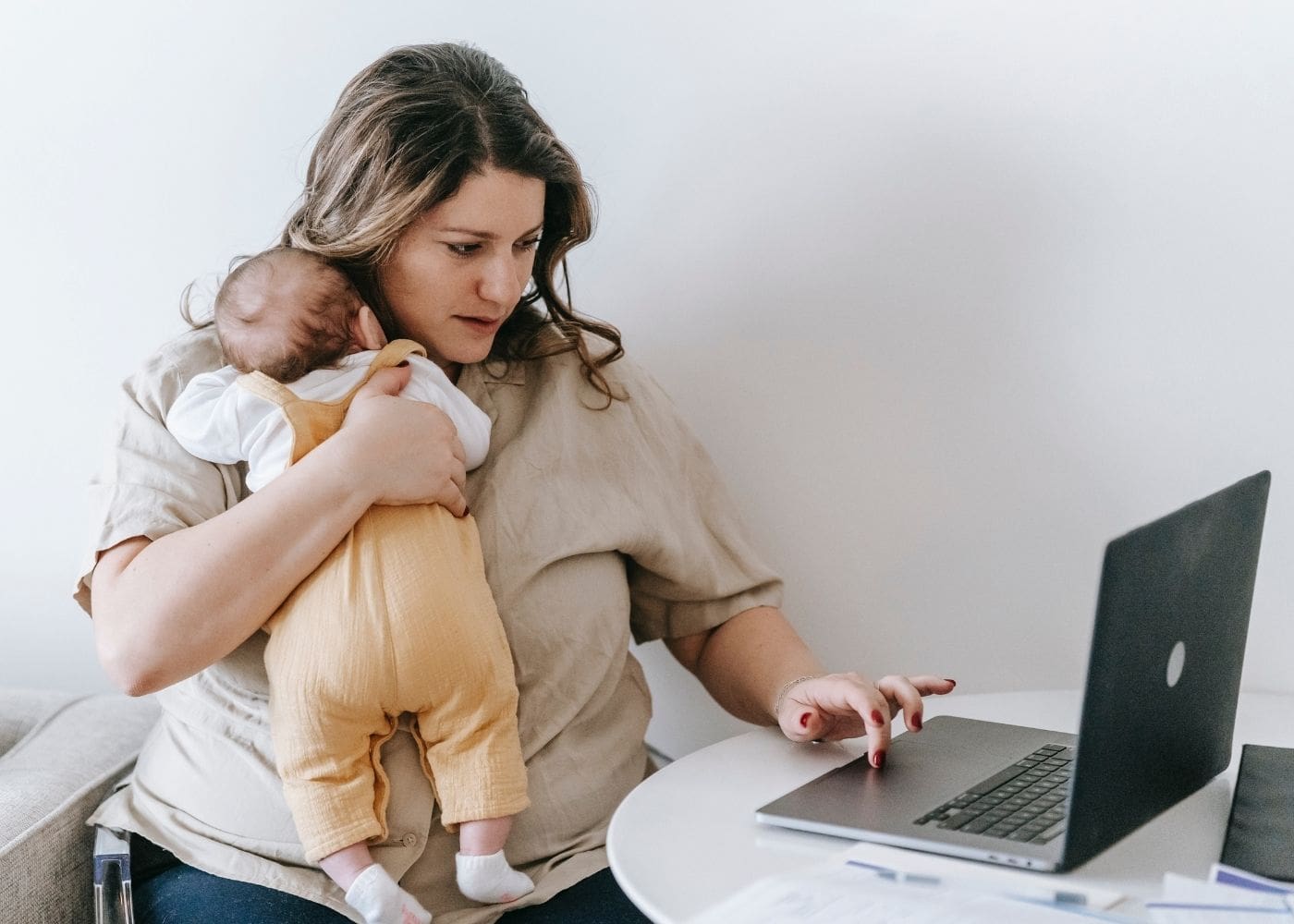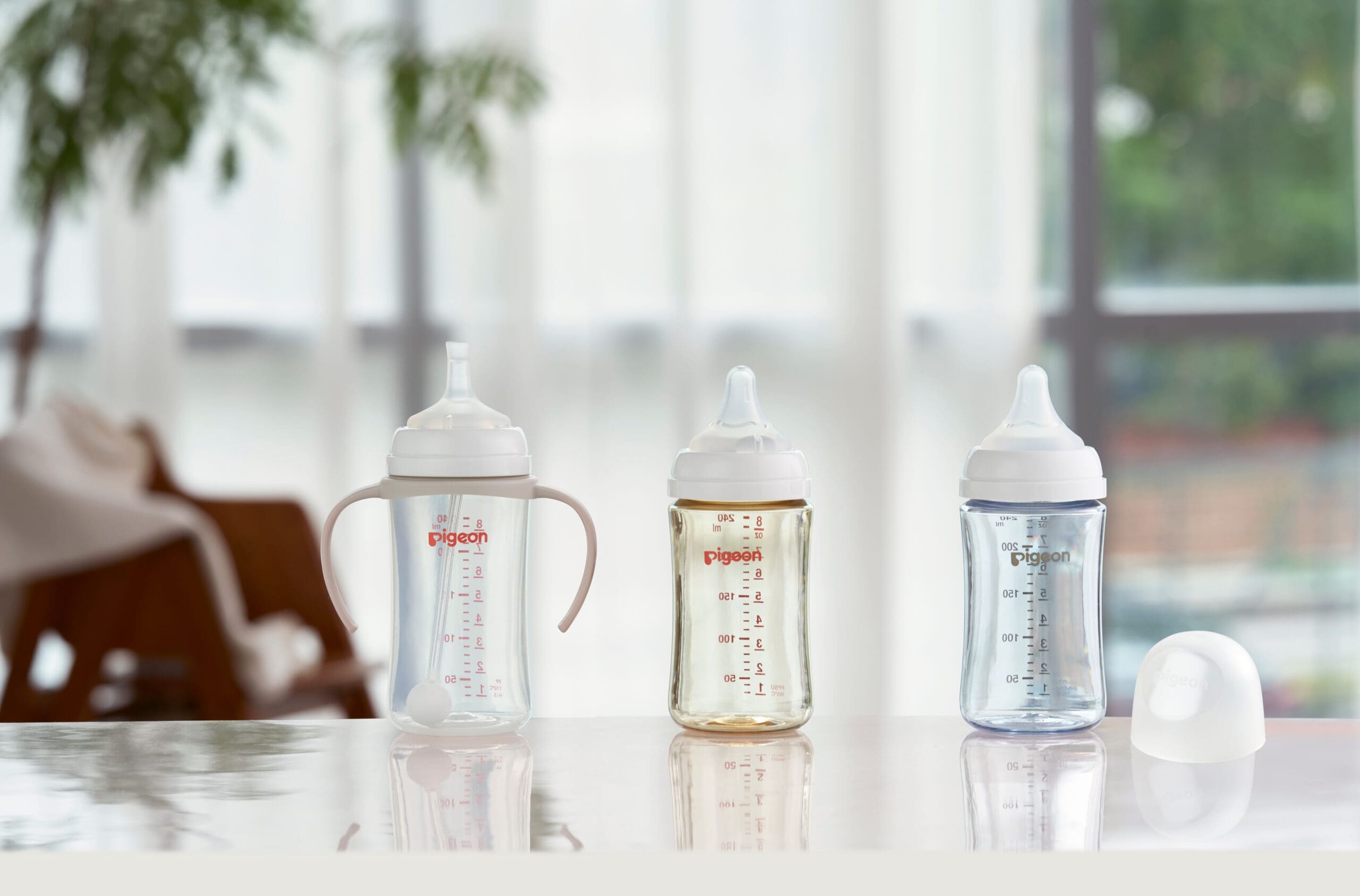How to Choose the Right Nursing Bottle for Your Baby
Nursing bottles come in a variety of materials, each with its own benefits. Plastic bottles are lightweight, durable, and convenient for everyday use, though they may scratch over time. Glass bottles are heavier but highly durable, scratch-resistant, and easy to clean. When choosing a bottle, consider durability, ease of cleaning, heat resistance, and safety to find the material that best suits your baby’s needs and your lifestyle.
Feeding your baby is one of the most special moments of the day, and the right nursing bottle can make it easier and more enjoyable for both baby and parent.
With so many options available, here are the key factors to consider when choosing a nursing bottle for you and your baby:
Nipple Design
The nipple is the most important part of a baby bottle. Choose one that feels like a mother’s breast, as this helps your baby transition smoothly between breastfeeding and bottle-feeding without confusion or rejection. A nipple that encourages natural tongue movement is ideal, supporting your baby’s instinctive feeding pattern. Backed by over 70 years of breastfeeding research, Pigeon’s nipples are specifically designed to support your baby’s natural latch, suck, and swallow, making the switch between breast and bottle seamless and comfortable. Every baby is unique, and Pigeon bottles are trusted by 99% of mums and accepted by 98% of babies*.
Flow Rate
It’s also important to select a nipple flow rate that matches your baby’s age and feeding needs. Newborns usually do best with slow-flow nipples to prevent overfeeding and reduce the risk of choking, while older babies can handle faster flows as their feeding skills develop. Refer to How To Choose The Right Nipple By Age & When to Switch ? for your baby here.
Anti-Colic Features
Anti-colic bottles are designed to reduce the amount of air your baby swallows during feeding, helping to prevent gas, fussiness, and colic. They usually feature special venting systems built into the nipple or bottle body, allowing air to flow into the bottle instead of your baby’s tummy. This keeps milk flow steady, minimizes bubbles, and reduces spit-up.
By limiting swallowed air, anti-colic bottles help your baby feed more comfortably and efficiently. When choosing one, look for a design that is easy to clean, durable, and suited to your baby’s age and feeding style.
Pigeon nipples come with anti-colic function – advanced venting system that effectively minimizes swallowed air, supporting a smoother, more comfortable feeding experience for your baby.
Bottle Material
Plastic bottles are lightweight and convenient, while glass bottles are durable and easy to clean. Pigeon nursing bottles come in a variety of materials — T-Ester, PP, PPSU, and Glass — each designed to give parents the best combination of safety, comfort, and convenience.
- T-Ester – Exclusive to Pigeon, this innovative material combines the clarity of glass with the lightness of plastic. It also resists UV damage, keeping the bottle clear and durable even after repeated use.
- PP (Polypropylene) – A lightweight and practical choice for daily feeding. It’s easy to carry and handle, making it perfect for parents on the go.
- Glass – Loved for its clarity, strength, and scratch resistance, glass bottles are ideal for parents who prefer a pure and sturdy option. They’re slightly heavier, but offer long-lasting durability.
- PPSU (Polyphenylsulfone) – Known for exceptional heat resistance, PPSU bottles are often used in medical-grade settings. Their natural honey-gold hue reflects the quality of the material — no added colour, just pure strength and safety.
Durability and hygiene
Choose a bottle with fewer parts and wide openings, making it easier to clean and sanitize. Bottles that are dishwasher-safe or Pigeon T-Esters bottles that are UV-sterilizer-friendly can save time.
For your baby’s safety and hygiene, we recommend replacing nursing bottles every 6–12 months, regardless of material. Frequent sterilisation — whether by boiling, steaming, or chemicals — can gradually affect both hygiene and durability.
If you notice stubborn milk stains, scratches, cloudiness, or any changes in texture, it’s a sign that your bottle has worn out and should be replaced.
If you use a UV steriliser, it’s safe for Pigeon’s plastic and silicone products. However, repeated UV exposure may cause materials to age or weaken faster, leading to discolouration or brittleness over time. Replace the bottle if you see these signs.
When using a UV steriliser with a drying function, always place the bottle body at least 1 inch (2.54 cm) away from the air outlet or heating surface to prevent heat damage and extend the bottle’s lifespan.
By keeping these factors in mind
Choosing the right bottle doesn’t have to be complicated. By considering nipple design, flow rate, anti-colic features, material, and hygiene, parents can choose the Pigeon nursing bottle that best supports their baby’s feeding needs — providing comfort, safety, and peace of mind.
Refer to this for a chart on Pigeon SofTouch™ Nursing Bottles:
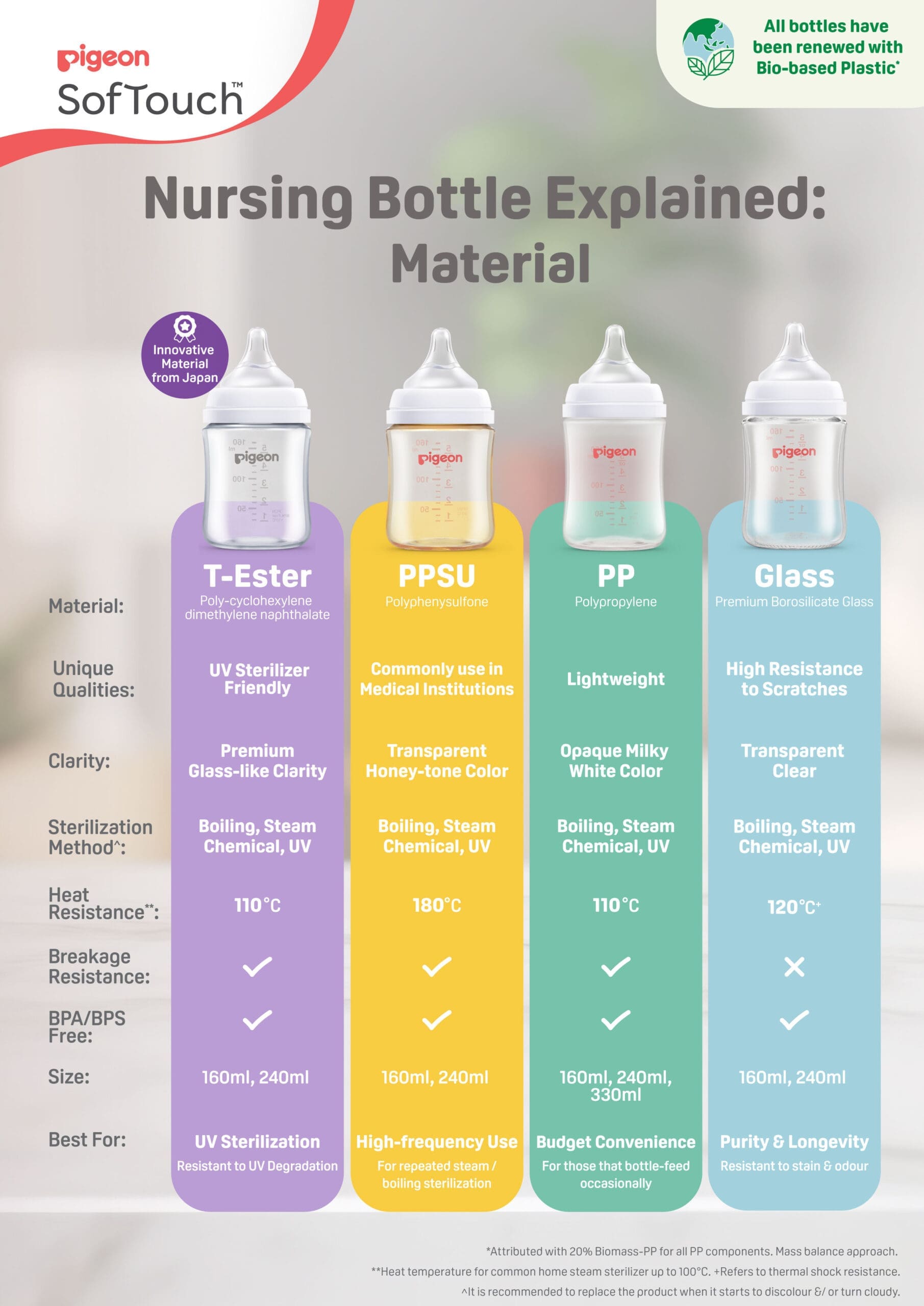
*Based on a survey conducted with AsiaParent in Singapore in 2024.




